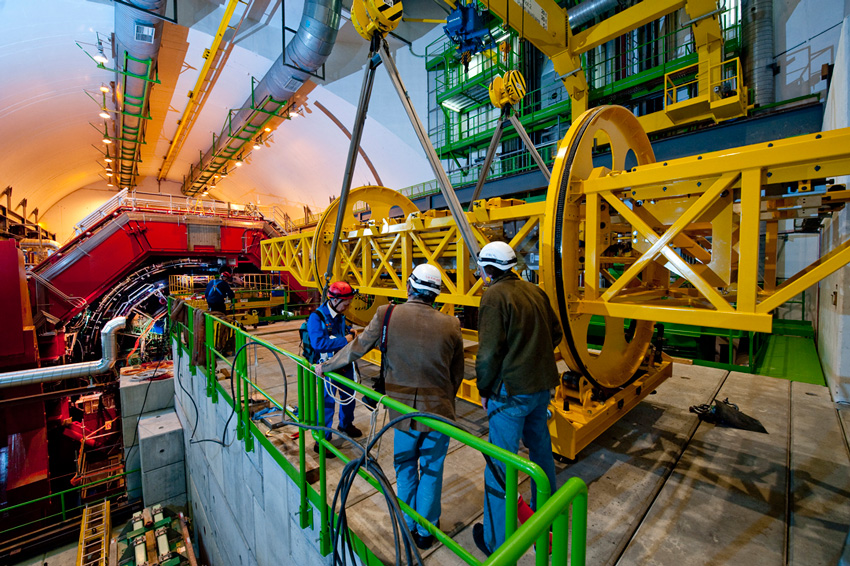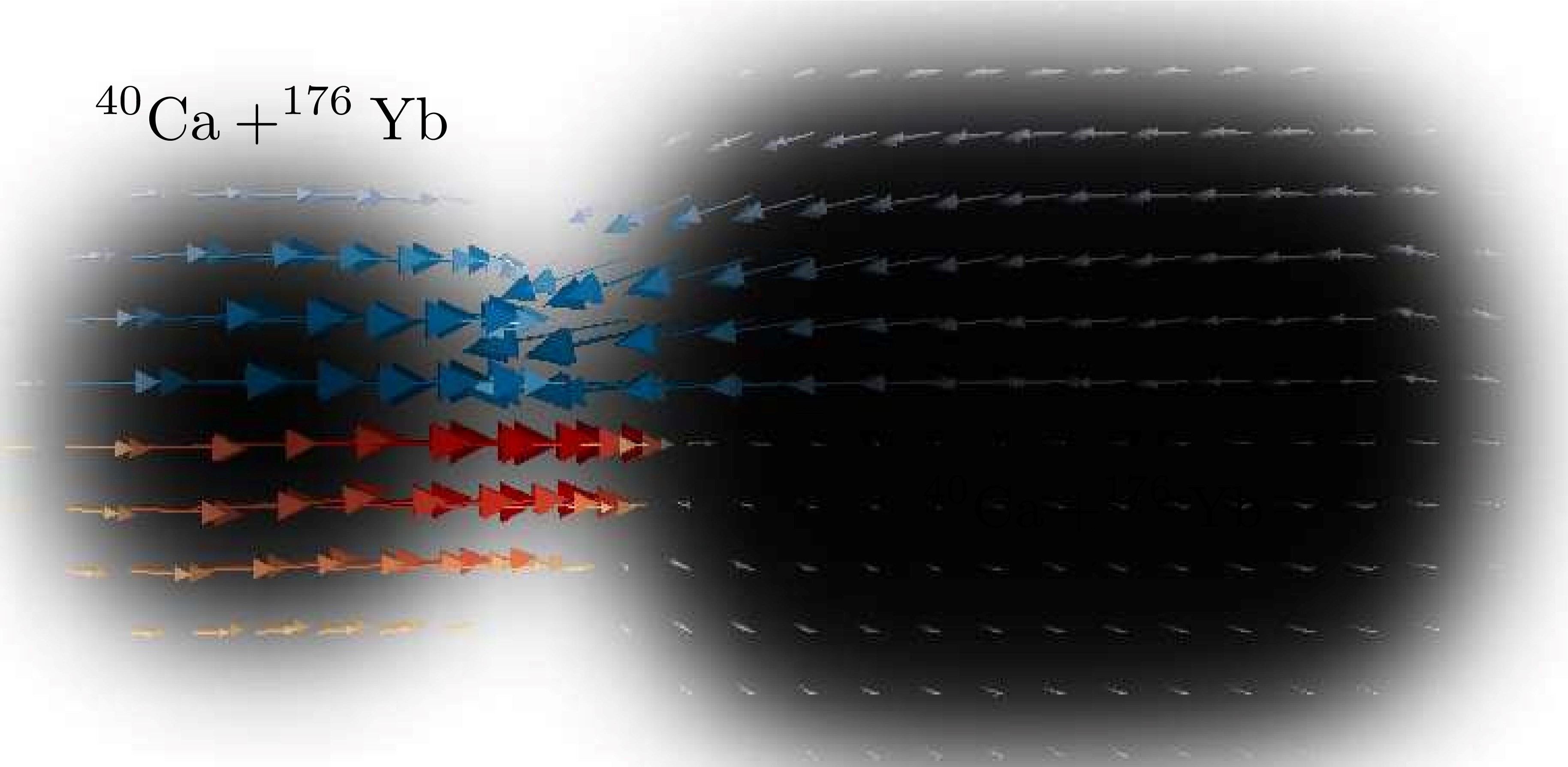Reaching Back Towards the Big Bang
US-led experiments at the LHC recreate the brightest, most dense quark gluon plasma.

The Science
The collisions of lead ions at the Large Hadron Collider (LHC) outside Geneva, Switzerland create tiny samples of matter at extreme energy densities that have not existed in the Universe since microseconds after the Big Bang. At these densities, ordinary matter melts into its primordial constituents of quarks and gluons, shining brightly at a temperature of more than 100,000 times hotter than the center of the Sun. The study of the electromagnetic radiation emitted by this plasma of quarks and gluons as it expands and cools provides unique insights into the nature of this primordial matter. To explore this science, the ALICE-USA Collaboration, a group of US Universities and National Labs, has built a large Electro Magnetic Calorimeter with principal US funding from the DOE Office of Nuclear Physics (NP). This device has been undergoing phased installation in the ALICE experiment (see above picture) and participating through LHC Run 1 which recently concluded.
The Impact
The modern fundamental theory that underlies the physics of all matter, Quantum Chromo Dynamics (QCD) explains the structure of neutrons and protons (the particle constituents of atomic nuclei) in terms of the interactions of underlying quarks and gluons and the mechanism (confinement) that keeps quarks tightly bound and strictly hidden from us in the everyday world. At the incredible energy available in collisions of heavy ions at the LHC the confinement mechanism explained by QCD is overcome and, for an instant, a plasma of free quarks and gluons is formed. By studying the radiation emitted from this quark-gluon plasma (QGP) with the ALICE Electromagnetic Calorimeter as it is created, expands and cools, and finally condenses back into ordinary matter, we gain unique insights into QCD and the physics that holds all matter together.
Summary
The best-known goal of the LHC is the exploration of the "energy frontier", using proton collisions at unprecedented beam energy and luminosity. Equally ground-breaking, the LHC also permits us to explore the "energy density frontier" via the collision of lead nuclei at 5.5 TeV per nucleon pair. This is 30 times the collision energy of the Relativistic Heavy Ion Collider (RHIC) at Brookhaven, the only operating collider in the U.S. The LHC extends the study of the quark–gluon plasma (QGP) and phase transitions of the strong interaction into a new regime of temperature and density, and provides complementary information to RHIC results. In preparation for the LHC Run 2 scheduled to start early in 2015, The ALICE-USA collaboration has competed an upgrade to the of the ALICE Electro Magnetic Calorimeter to expand its acceptance and allow the observation of correlated pairs of jets and correlated photon-jet pairs from the QGP allowing detailed studies of the transport properties of de-confined matter. The US scope of this so called DCal project was recently completed with the delivery of a new set of DCal Super Modules to CERN and their staging for installation in preparation for LHC Run 2.
Contact
T.M. Cormier
Physics Division, Oak Ridge National Laboratory
Cormiertm@ORNL.Gov
D. J. Dean
Physics Division, Oak Ridge National Laboratory
Deandj@ORNL.Gov
Funding
DOE Office of Science Nuclear Physics program
French Funding: IN2P3
Italian Funding: INFN
Japanese Funding: MEXT
Chinese Funding: CMoE
Finnish Funding: FMoE
Publications
Measurement of the inclusive differential jet cross section in pp collisions at √s=2.76 TeV. The ALICE Collaboration, Physics Letters B, Volume 722, Issues 4–5, 24 May 2013, Pages 262–272.
Measurement of Electrons from Semileptonic Heavy-flavor Hadron Decays in pp Collisions at 7 TeV, The ALICE Collaboration, PRD 86 (2012) 112007.
Neutral Pion and Meson Production in pp at 0.9 and 7 TeV, The ALICE Collaboration PLB 717 (2012) 162.
Performance of prototypes for the ALICE electromagnetic calorimeter, T.M. Cormier et al., Nuclear Inst. and Methods in Physics Research A 615 (2010) 6-13.
Validation of the ALICE material budget using photons from pair conversions, The ALICE Collaboration, arXiv:1307.6796.
Related Links
ALICE Prepares for Jet Measurements
Highlight Categories
Program: NP
Additional: Collaborations , International Collaboration



